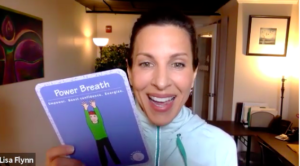
|
Start your Yoga and Mindfulness in the Classroom journey today! Sign Up Now!
|

Mainstream yoga publications often feature photos of willowy, flexible people performing fantastic gymnastic feats that would leave most of us crippled for life. Impressive? No doubt. But is it yoga? Sort of.
While the postures, or asanas, are perhaps the best known aspect of yoga, they are far from being the whole of yoga. For more than 5,000 years (and maybe as long as 9,000 years), people have been practicing yoga as an art and science of holistic healthcare. “Holistic” refers to the “whole person.” Rather than addressing just the physical self, yoga seeks to understand and sustain the entire self – body, mind, and spirit. Yogis believe that a person is truly healthy only when all aspects of the self are optimally functional and balanced.
Movement, healthy food, clean water, and plenty of rest – all of these are necessary for good health. So are relaxation, positive attitude, good self-esteem, mutually supportive relationships, spiritual growth, and joy. It’s like a stone archway – you can’t remove one stone without shifting the others – and perhaps dooming the entire structure to fall. True health exists in a balance of all of these elements, all equally necessary for optimal function and balance.
In a society where diagnoses of anxiety disorder and ADD/ADHD seem the rule rather than the exception, where children suffer from over-tiredness and migraine headaches, and where childhood obesity figures are nearing 20%, it is necessary now more than ever to help our children build habits to live healthy lives. Consider, as well, that 40% of children miss several days of school each year. Absences are disruptive and costly – requiring additional teacher hours and school resources to help returning students catch up on missed lessons.
Today’s teachers are working harder than ever – instructing children on multiple learning levels with various accommodation needs and health circumstances. The Yoga 4 Classrooms® “Be Well” Yoga 4 Classrooms Activity Cards help children develop the self-awareness to realize how they feel and what they need; teach them strategies to slow down, unwind, and manage their emotions; guide them through movements that optimize their strength, flexibility, and balance; demonstrates healthy eating habits; and reminds them to love and forgive themselves – all of which help to equalize the classroom and allow teachers to teach more effectively. In truth, cultivating wellness is as much about healthy children as it is about healthy schools.

Ready to Be Well?
We have several videos of the “be well” activities in action. Check them out (and so much more!) on our YouTube channel. Be sure to subscribe!
| Cookie | Duration | Description |
|---|---|---|
| cookielawinfo-checkbox-analytics | 11 months | This cookie is set by GDPR Cookie Consent plugin. The cookie is used to store the user consent for the cookies in the category "Analytics". |
| cookielawinfo-checkbox-functional | 11 months | The cookie is set by GDPR cookie consent to record the user consent for the cookies in the category "Functional". |
| cookielawinfo-checkbox-necessary | 11 months | This cookie is set by GDPR Cookie Consent plugin. The cookies is used to store the user consent for the cookies in the category "Necessary". |
| cookielawinfo-checkbox-others | 11 months | This cookie is set by GDPR Cookie Consent plugin. The cookie is used to store the user consent for the cookies in the category "Other. |
| cookielawinfo-checkbox-performance | 11 months | This cookie is set by GDPR Cookie Consent plugin. The cookie is used to store the user consent for the cookies in the category "Performance". |
| viewed_cookie_policy | 11 months | The cookie is set by the GDPR Cookie Consent plugin and is used to store whether or not user has consented to the use of cookies. It does not store any personal data. |